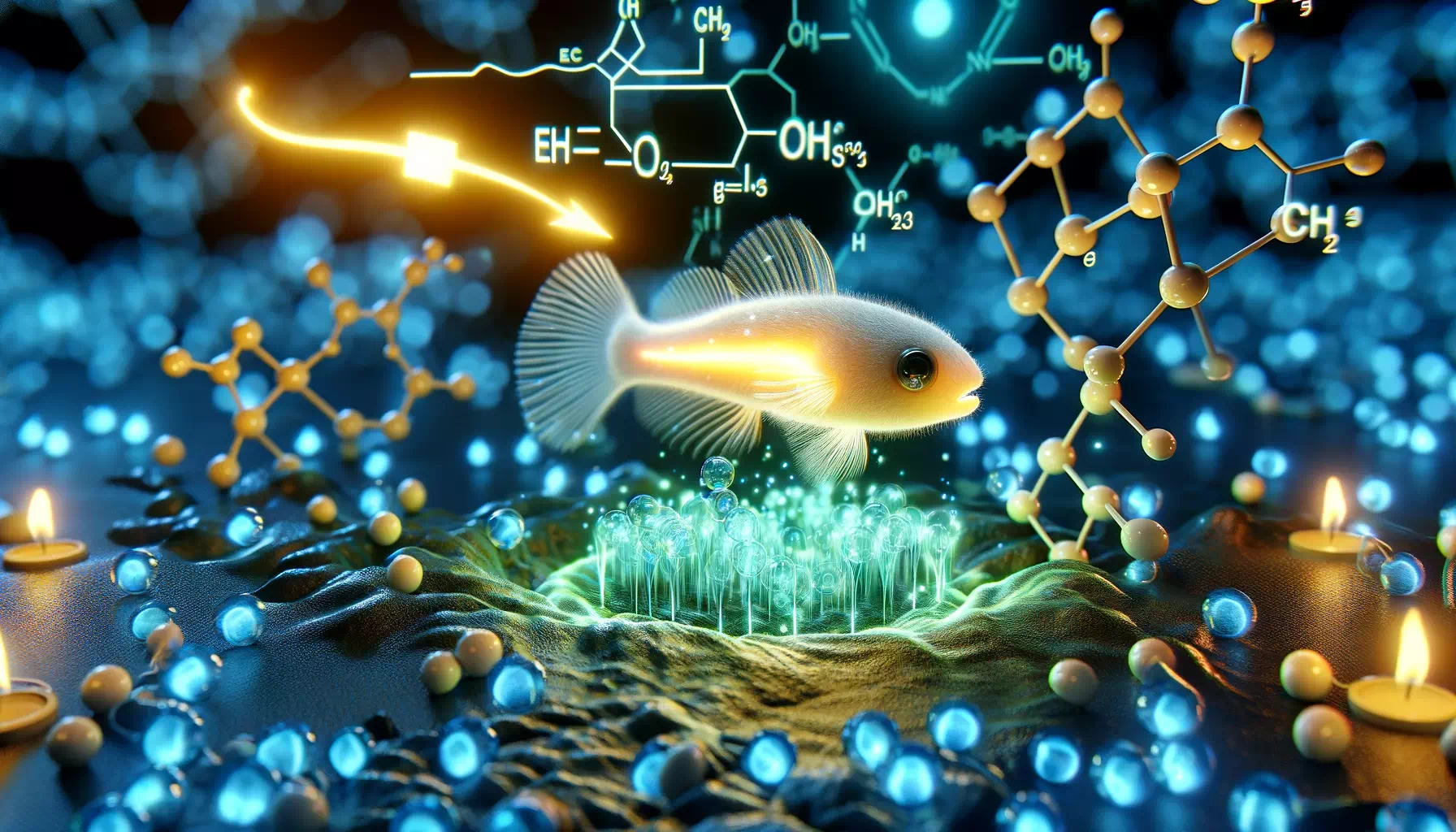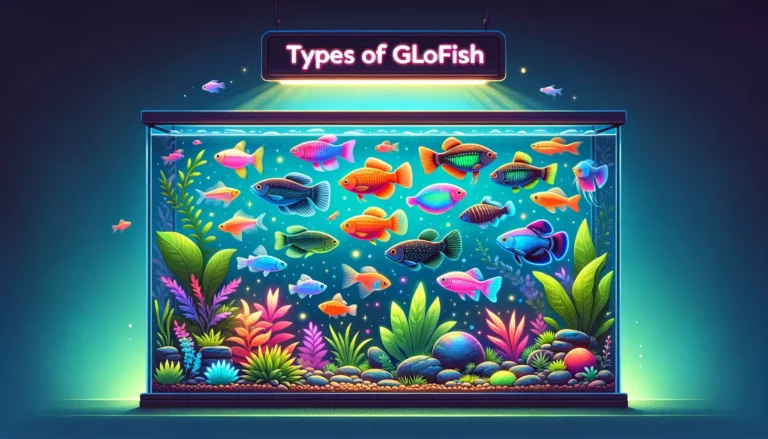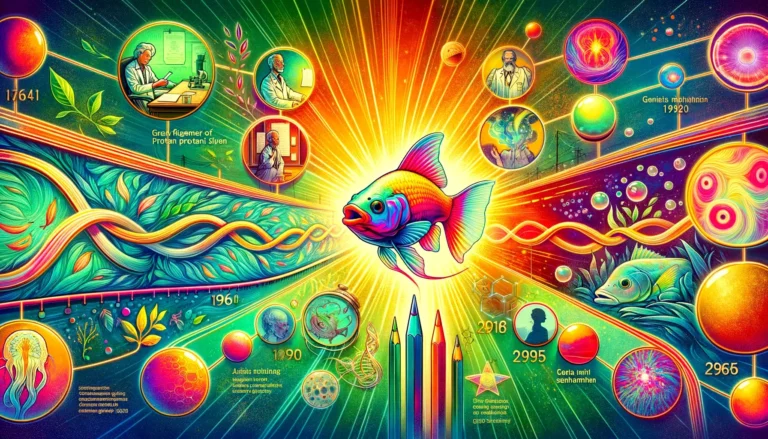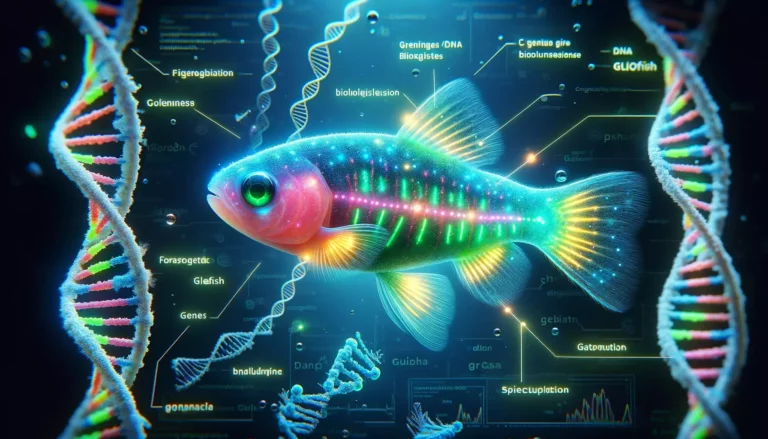How do GloFish achieve their luminous properties?
GloFish are a remarkable type of fish that possess a captivating ability to glow in the dark. These unique aquatic creatures have captivated the curiosity of both scientists and enthusiasts due to their mesmerizing luminescence. In this discussion, we will delve into the enigmatic world of GloFish, shedding light on the extraordinary phenomenon of their glowing properties.
The secret behind GloFish’s luminescence lies in the realm of genetics. These fish have been genetically engineered to exhibit this mesmerizing trait. Scientists have identified specific genes responsible for this captivating glow and have skillfully incorporated them into GloFish.
By manipulating the genetic makeup of these fish, researchers have successfully introduced the luminescent genes, creating fish that emit a stunning, otherworldly light. This fascinating process of genetic modification is the key to understanding how GloFish achieve their radiant glow.
To grasp the essence of GloFish’s luminescence, it is essential to explore the chemistry involved. Bioluminescence is the phenomenon that drives their radiant glow. This intricate process relies on a light-emitting molecule called luciferase, which reacts with oxygen to produce light.
Additionally, other compounds, such as luciferin and cofactors, play crucial roles in this chemical reaction. The coordinated interplay of these elements results in the mesmerizing glow that sets GloFish apart. Understanding the chemistry behind bioluminescence is essential in comprehending how GloFish achieve their remarkable luminosity.
While the science behind GloFish is fascinating, it is crucial to address the ethical and environmental aspects of their creation and ownership. The genetic modification of living organisms raises ethical questions, and it is essential to weigh the benefits against potential risks. Moreover, the environmental impact of releasing GloFish into natural ecosystems must be carefully evaluated. Ensuring responsible ownership and consideration of these factors is crucial in the broader conversation about GloFish.
As we continue to explore the world of GloFish, it is important to consider their future. Ongoing research and advancements in genetic engineering may lead to new developments in GloFish and other genetically modified organisms. The scientific community and enthusiasts alike are eager to see what lies ahead for these captivating fish. The future holds the promise of more discoveries and innovations, expanding our understanding of bioluminescence and the fascinating world of GloFish.
Understanding the Role of Genetic Engineering in Creating GloFish

Genetic engineering plays a pivotal role in the creation of GloFish. Scientists utilize this innovative technology to modify the genetic makeup of these fish, imparting them with the ability to emit radiant colors. Through precise genetic alterations, researchers can introduce and control specific genes that influence the fish’s pigmentation and fluorescence. This process of genetic manipulation allows for the creation of GloFish in a wide array of vibrant and mesmerizing colors, making them unique and captivating.
Identifying the Genes Responsible for Color Changes
The genes responsible for the remarkable color changes in GloFish primarily belong to the family of fluorescent proteins. One of the most commonly used genes is derived from a jellyfish known as Aequorea victoria. This gene encodes for a fluorescent protein called green fluorescent protein (GFP). When this gene is successfully integrated into the fish’s genome, it enables the production of GFP, which emits a greenish-blue light when exposed to certain wavelengths.
In addition to GFP, other fluorescent genes like red fluorescent protein (RFP) or orange fluorescent protein (OFP) may also be employed to create fish with different color variations. The choice of genes depends on the desired color outcome, resulting in the diverse palette of GloFish available to enthusiasts.
The Process of Gene Integration and Manipulation
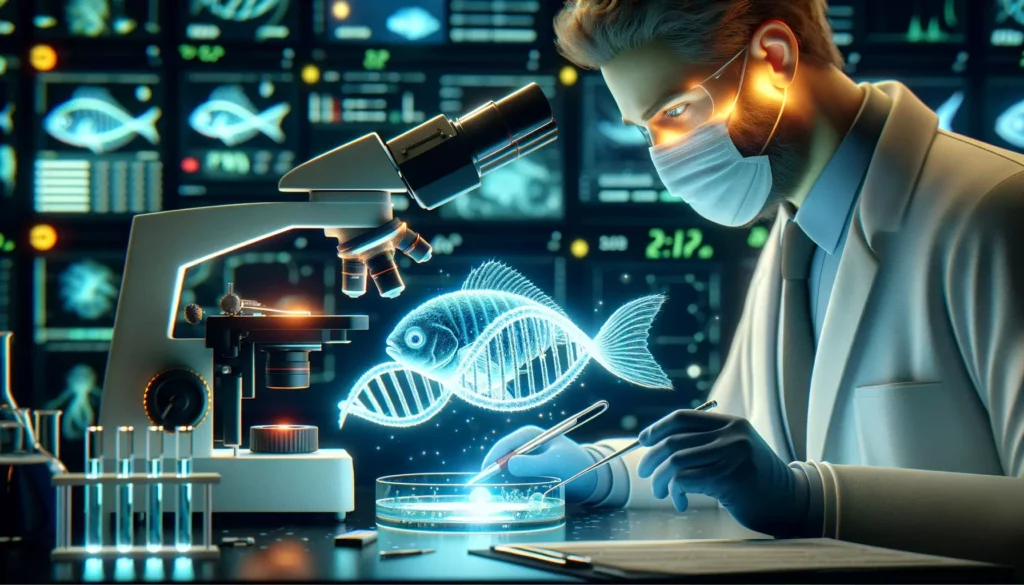
The manipulation of genes to create GloFish is a meticulous process. Scientists first identify the specific gene or genes they want to introduce into the fish. They then use specialized techniques, such as microinjection or gene editing tools like CRISPR-Cas9, to insert these genes into the fish’s DNA. Microinjection involves physically injecting the chosen gene(s) into fertilized fish eggs. In contrast, CRISPR-Cas9 allows for precise editing of the fish’s existing genes to incorporate the desired traits.
Once the genes are successfully integrated, they become a permanent part of the fish’s genetic code, leading to the expression of fluorescent proteins and the stunning luminescence that characterizes GloFish. This intricate process showcases the remarkable possibilities of genetic engineering in shaping the appearance and characteristics of living organisms.
The Process of Creating GloFish
Stages of Creating GloFish, from Selecting Parent Fish to Obtaining Luminescent Offspring
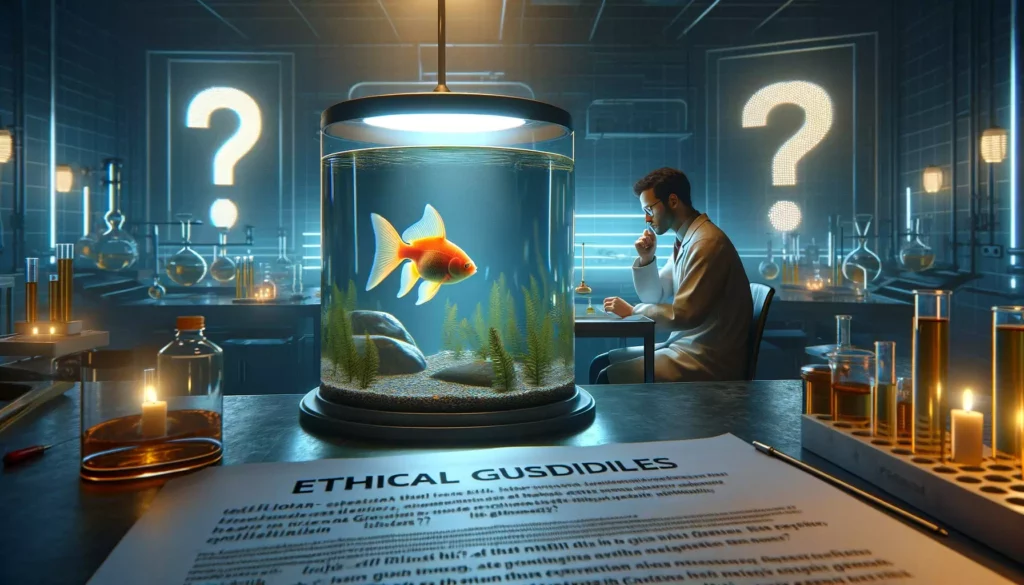
The creation of GloFish involves a series of carefully orchestrated steps, starting with the selection of parent fish and culminating in the birth of luminescent offspring. Here is an overview of the key stages in this fascinating process:
- Parent Fish Selection: The process begins by selecting two parent fish with the desired genetic traits. These initial fish may have been previously engineered to carry the genes responsible for fluorescence or may be wild-type fish. The choice of parent fish influences the color and traits that the GloFish offspring will inherit.
- Egg Collection: Female parent fish are carefully monitored for egg development, and once mature, their eggs are collected. These eggs serve as the foundation for the genetic modification process.
- Gene Introduction: At this stage, genetic engineers employ techniques such as microinjection or CRISPR-Cas9 to introduce the fluorescent genes into the fish embryos. Microinjection involves injecting the chosen genes directly into the eggs, while CRISPR-Cas9 allows for precise genetic editing to insert the desired genes.
- Embryo Development: After gene introduction, the embryos are nurtured in a controlled environment. The developing embryos incorporate the introduced genes into their genetic makeup.
- Larval Rearing: Once the embryos hatch, the resulting larvae are carefully nurtured in specialized tanks. These tanks are designed to provide optimal conditions for growth, including temperature, water quality, and nutrition.
- Selection and Growth: During the larval stage, the fish are closely monitored for the expression of the desired fluorescent traits. Only those fish displaying the desired traits are selected for further breeding. This selective process ensures the propagation of the luminescent characteristics.
- Breeding and Reproduction: The selected GloFish are allowed to reach maturity and reproduce. This involves mating the fish with compatible partners, either other GloFish or closely related species.
- Generation of Luminescent Offspring: Through the careful selection and breeding of GloFish with the desired genetic traits, luminescent offspring are eventually produced. These offspring inherit the fluorescent genes from their parents and express the captivating glow that characterizes GloFish.
Mentioning Selection and Crossbreeding
Selection and crossbreeding play pivotal roles in creating GloFish with specific colors and patterns. By choosing parent fish that exhibit the desired traits and carefully selecting offspring with the most pronounced fluorescence, breeders can refine and enhance the appearance of these unique fish.
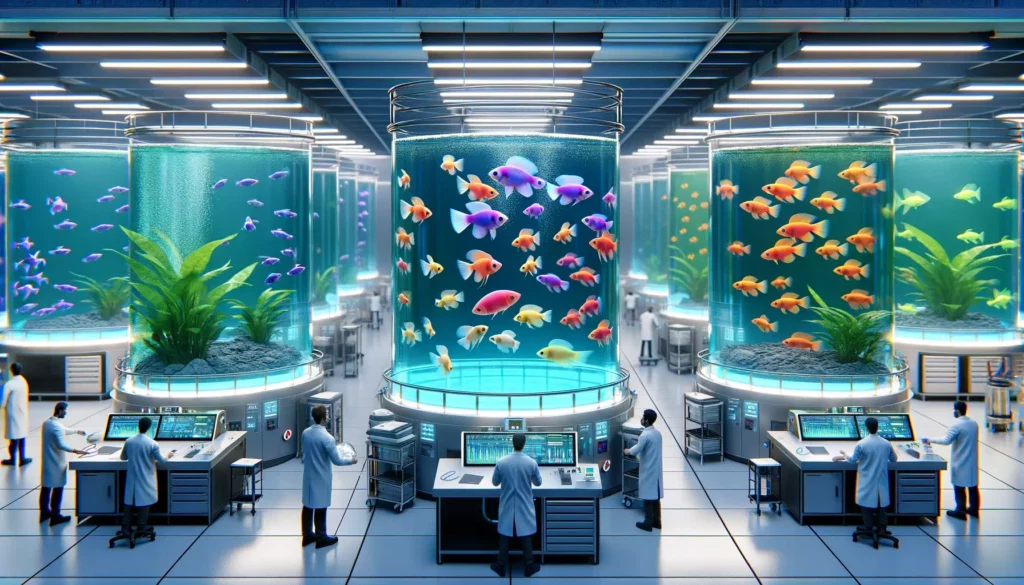
Through successive generations, the process of selection and crossbreeding allows for the development of a diverse range of GloFish varieties, each with its own distinct luminescent qualities. This meticulous breeding and selection process ensures that GloFish enthusiasts have access to a wide array of captivating and vibrant fish to enjoy in their aquariums.
Luminescent Proteins and Chemistry
Understanding How Luminescent Proteins Work
The captivating luminescence of GloFish is powered by special proteins known as luminescent or fluorescent proteins. These proteins operate based on a fascinating chemical process called bioluminescence. Here’s an explanation of how these proteins work:
Luminescent proteins possess a unique structure that enables them to emit light when exposed to certain conditions. The key player in this process is the protein called luciferase. Luciferase acts as an enzyme that facilitates the reaction leading to light emission.
Luciferase and the Chemistry of Bioluminescence

The core of bioluminescence is the enzyme luciferase, which interacts with a molecule called luciferin. Luciferin is a small molecule that serves as the substrate for the reaction. When luciferase and luciferin come into contact, they initiate a chemical reaction.
Here’s a simplified breakdown of the bioluminescent reaction:
- Luciferase Reaction: Luciferase catalyzes the oxidation of luciferin in the presence of oxygen. During this reaction, luciferin is converted into an excited-state molecule, which stores energy in the form of high-energy electrons.
- Release of Energy: The excited-state luciferin then releases this stored energy by returning to its ground state, resulting in the emission of photons (light particles) as it transitions from a high-energy state to a lower-energy state.
- Visible Light Emission: The photons emitted during this process fall within the visible light spectrum, producing the stunning and often colorful glow that characterizes GloFish.
In addition to luciferase and luciferin, other chemical components, such as cofactors, are also involved in the bioluminescent reaction. These cofactors help facilitate the reaction and maintain the efficiency of the light emission process.
In summary, the luminescent proteins in GloFish work by utilizing the enzyme luciferase to catalyze the oxidation of luciferin, resulting in the emission of visible light. This chemical reaction underlies the captivating glow of GloFish and showcases the remarkable world of bioluminescence in these unique aquatic organisms.
Ethical and Environmental Considerations
Exploring the Ethical Aspects of Genetic Engineering in the Animal Kingdom
Genetic engineering in the animal kingdom, including the creation of GloFish, raises significant ethical questions. It involves deliberate manipulation of an organism’s genetic makeup, which can have both positive and negative implications. Here, we delve into some of the ethical aspects associated with genetic engineering in animals:
- Animal Welfare: One primary concern is the well-being of the genetically modified animals. Ethical debates center around whether altering an animal’s genes for aesthetic purposes is justifiable when it may lead to potential health risks or discomfort for the animals. Ensuring the ethical treatment and humane conditions for genetically modified animals is a paramount consideration.
- Biodiversity: Genetic modification may inadvertently impact the biodiversity of natural ecosystems if genetically modified organisms are released into the wild. Concerns arise about potential disruptions to the balance of local ecosystems, as genetically modified organisms may outcompete or interbreed with native species.
- Consumer Awareness: Ethical concerns extend to consumer awareness. It is essential that consumers are informed about the genetic modifications made to animals and the potential long-term consequences. Transparency in labeling and marketing is crucial to enable individuals to make informed choices.
Discussing Environmental Conservation and Regulation of GloFish Sales
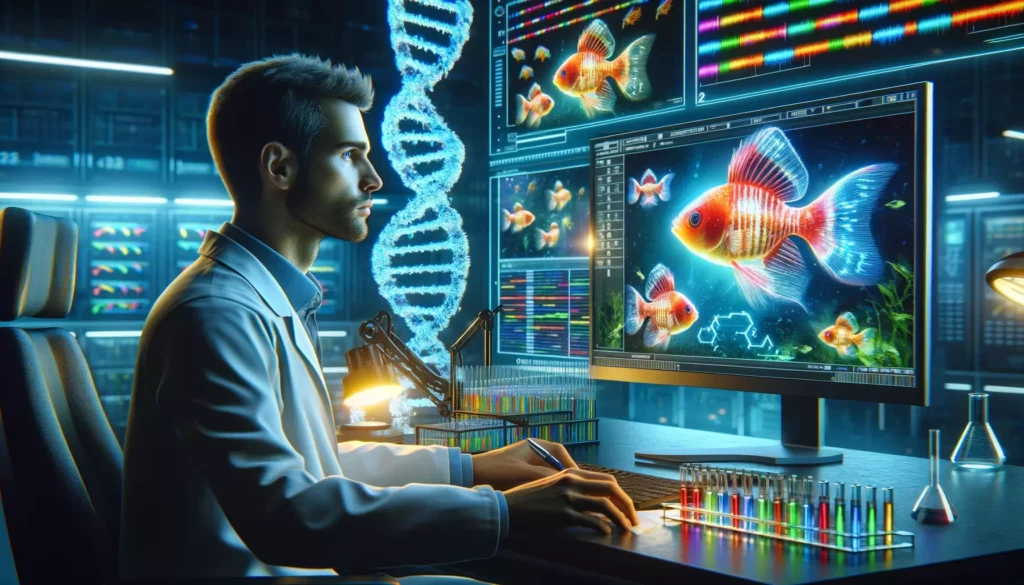
The environmental aspects surrounding GloFish involve both conservation and regulatory considerations. As these genetically modified organisms are increasingly available in the pet trade, it is essential to address these issues:
- Environmental Impact: The release of GloFish into natural ecosystems, whether intentionally or accidentally, poses ecological risks. These modified fish may disrupt local ecosystems, potentially leading to negative consequences for native species. The responsible ownership and prevention of unintentional releases are paramount for environmental conservation.
- Regulation and Legislation: Many countries and regions have implemented regulations governing the sale and possession of genetically modified organisms, including GloFish. These regulations aim to ensure responsible ownership and prevent environmental harm. Understanding and complying with local laws is essential for those interested in keeping GloFish.
- Conservation Efforts: Environmental organizations and researchers often emphasize the importance of preserving natural biodiversity. Efforts to conserve native species and ecosystems should be considered when discussing the use and distribution of genetically modified organisms like GloFish.
The Future of GloFish
Sharing the Latest Research and Developments in the Field of GloFish
The world of GloFish continues to evolve as scientists and researchers delve deeper into genetic engineering and bioluminescence. Here, we share some insights into the latest research and emerging developments concerning GloFish:
- Advanced Genetic Modification Techniques: Ongoing research is focused on refining genetic modification techniques, making them more precise and efficient. Scientists are exploring new methods to introduce genes into fish embryos, improving the success rate and reducing potential side effects.
- Expanded Color Palette: The range of colors available in GloFish is expected to expand further. Researchers are working on introducing novel genes that can produce an even broader spectrum of colors and patterns, offering enthusiasts an even more diverse selection of these captivating fish.
- Enhanced Luminescence: Scientists are investigating ways to enhance the intensity and duration of the luminescence exhibited by GloFish. This could result in fish that emit even more vivid and long-lasting glows, creating a more stunning visual display.
Exploring Potential Directions for the Development of GloFish
As the field of genetic engineering advances, several exciting possibilities emerge for the future of GloFish:
- Biomedical Research: GloFish’s luminescent properties have potential applications beyond aesthetics. They can serve as valuable tools in biomedical research. These fish can be engineered to express fluorescent proteins in specific tissues or organs, enabling researchers to study various biological processes and diseases more effectively.
- Conservation and Education: GloFish can play a role in raising awareness about the importance of biodiversity and conservation efforts. They can serve as ambassadors for their wild counterparts, helping educate the public about the fragility of ecosystems and the need for environmental preservation.
- Aquaculture and Food Production: Genetic engineering in fish may also have implications for aquaculture and food production. Researchers are exploring ways to enhance the growth rate and disease resistance of farmed fish, potentially improving food security and sustainability.
Conclusion
In the realm of GloFish, we have witnessed the remarkable fusion of genetic engineering and natural wonders, unlocking a world of vibrant and luminescent aquatic life. The incredible possibilities of genetic engineering have empowered scientists to manipulate genes and create living organisms that captivate our senses with their radiant beauty. These unique fish, born from the intersection of science and nature, serve as living canvases of bioluminescence, showcasing the astonishing achievements made possible by modern research.
As we marvel at the awe-inspiring glow of GloFish, it is imperative that we cultivate a deeper understanding and respect for the intricate workings of both nature and science. Genetic engineering, while a powerful tool for innovation and discovery, also brings forth ethical considerations and environmental responsibilities. We must tread carefully, ensuring the well-being of these genetically modified organisms and safeguarding the integrity of our ecosystems.
In this ever-evolving journey of exploration and discovery, let us embrace the enchantment of GloFish as a testament to the wonders of genetics, biology, and the natural world. May this fascination inspire us to nurture a profound appreciation for the delicate balance of life on our planet and the boundless potential that lies at the crossroads of nature and science. With continued curiosity, ethical mindfulness, and scientific stewardship, we can navigate the intricate pathways of genetic engineering while honoring the beauty and resilience of the world around us.
We invite you, our readers, to share your thoughts and reflections on the captivating world of GloFish. Whether you have marveled at their luminescent beauty in person or are intrigued by the science behind them, your perspective is valuable.
Let’s engage in a meaningful discussion about GloFish and the broader implications of genetic engineering in the animal kingdom. Share your questions, insights, and concerns. Together, we can foster a deeper understanding of the ethical, environmental, and scientific aspects of this fascinating subject.
Furthermore, we encourage you to take an active role in spreading awareness. Share this post with your friends and family, igniting their curiosity about the wonders of GloFish and the boundless possibilities of genetic engineering. Let’s create a ripple effect of knowledge and appreciation for both the natural world and the marvels of science. Your voice and actions can contribute to a more informed and conscientious approach to this captivating intersection of nature and technology.

